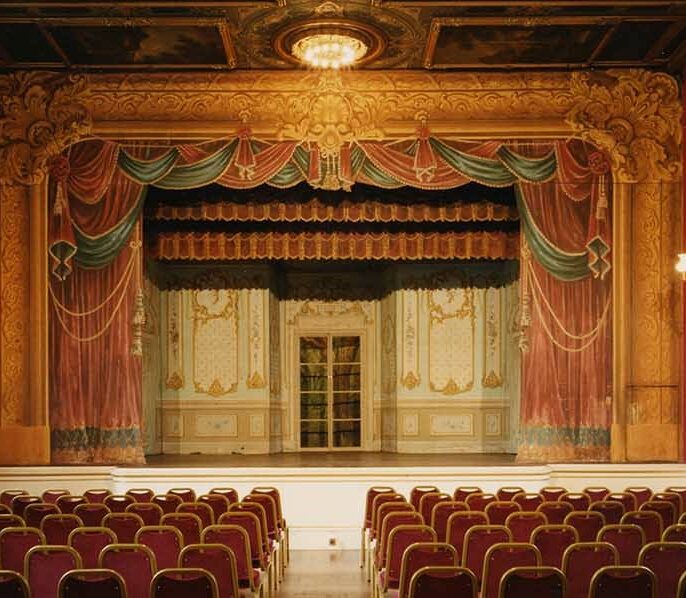Vol. 76, No. 3
pp. 116-175, 2022
Articles
-
Body Parts: Theatrical Supernumeraries and the Politics of Performance
Sara Reimers
Outside of theatre contexts, the word “supernumerary” is most commonly associated with a congenital condition involving the growth of an additional body part. This linguistic association between “supernumerary” and “body part” also hold for a theatrical usage. As an unspeaking, physical presence on stage, the supernumerary might very well be considered a body part: a part which is almost completely defined by embodiment, free from textual or vocal constraints. In this way, the supernumerary is both a presence and absence: at once a physical presence, loaded with semiotic meeting, and simultaneously a theatrical absence, as a voiceless, unnamed character. This article will examine both the artistic and political significance of the theatrical supernumerary, or “body part”.
-
A "Room to Make a Row in": Establishing the Origins of Chatsworth's Theatre
Louise Calf
Chatsworth House in Derbyshire, home to the Cavendish family since the sixteenth century, is arguably one of the most visually iconic country houses in the United Kingdom. The House has evolved over time, the main block constructed in the seventeenth century on the plan form of its Elizabethan predecessor, with a large, asymmetric wing to the north built in the 1820s–30s. The end of this wing is crowned by the Belvedere – a large, sheltered viewing platform offering views across the Estate – beneath which is Chatsworth’s Theatre. Presented like this, the House conforms to grand narratives of English country house building that present a mostly logical and overarching development of architectural design (Summerson; Girouard), encapsulating Dana Arnold’s observation that, “[f]or architecture to have a history we expect not only a timeless quality but also some kind of sequence or progression” (xv).
-
What is Missing from Henry Savile Clarke’s Musical Dream-Play Alice In Wonderland?
Catherine Richards
Henry Savile Clarke’s stage version of Lewis Carroll’s Alice books first appeared at the Prince of Wales’s Theatre, London, 23 December 1886. The production was very successful, with a prolonged initial run and over thirty revivals during the next forty years. This one original play, and its series of revivals, experienced absences in many forms. This paper will consider what is perhaps the most interesting form of absence – what is lost when a book is adapted for a performance on the stage, and what is the effect of this loss?
BOOK REVIEWS
Subscription Theater: Democracy and Drama in Britain and Ireland, 1880–1939, by Matthew Franks
reviewed by Anselm Heinrich
* Body Parts: Theatrical Supernumeraries and the Politics of Performance, by Sara Reimers
* A “Room to Make a Row in”: Establishing the Origins of Chatworth’s Theatre, by Louise Calf
* What is Missing from Henry Savile Clarke’s Musical Dreamplay Alice in Wonderland?, by Catherine Richards
